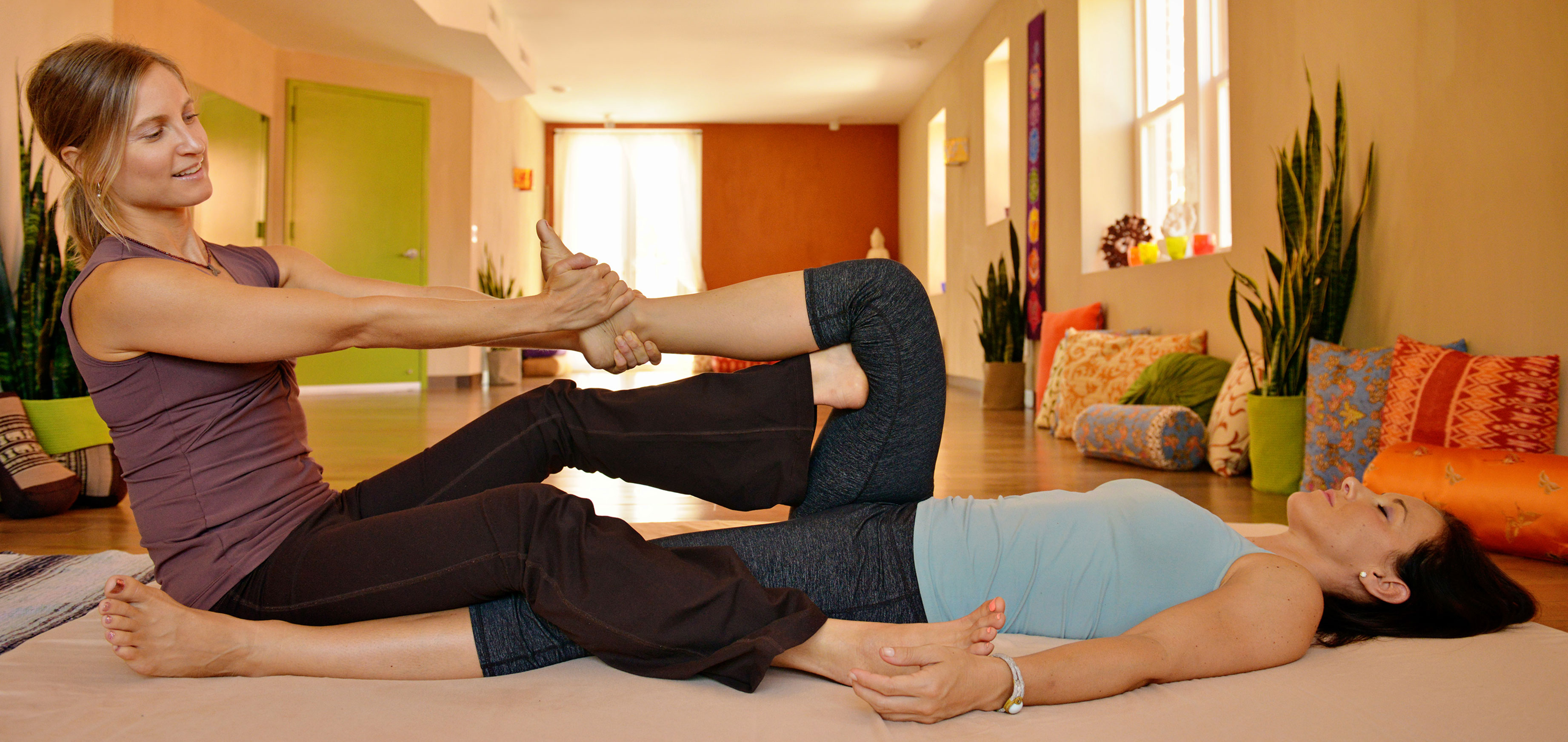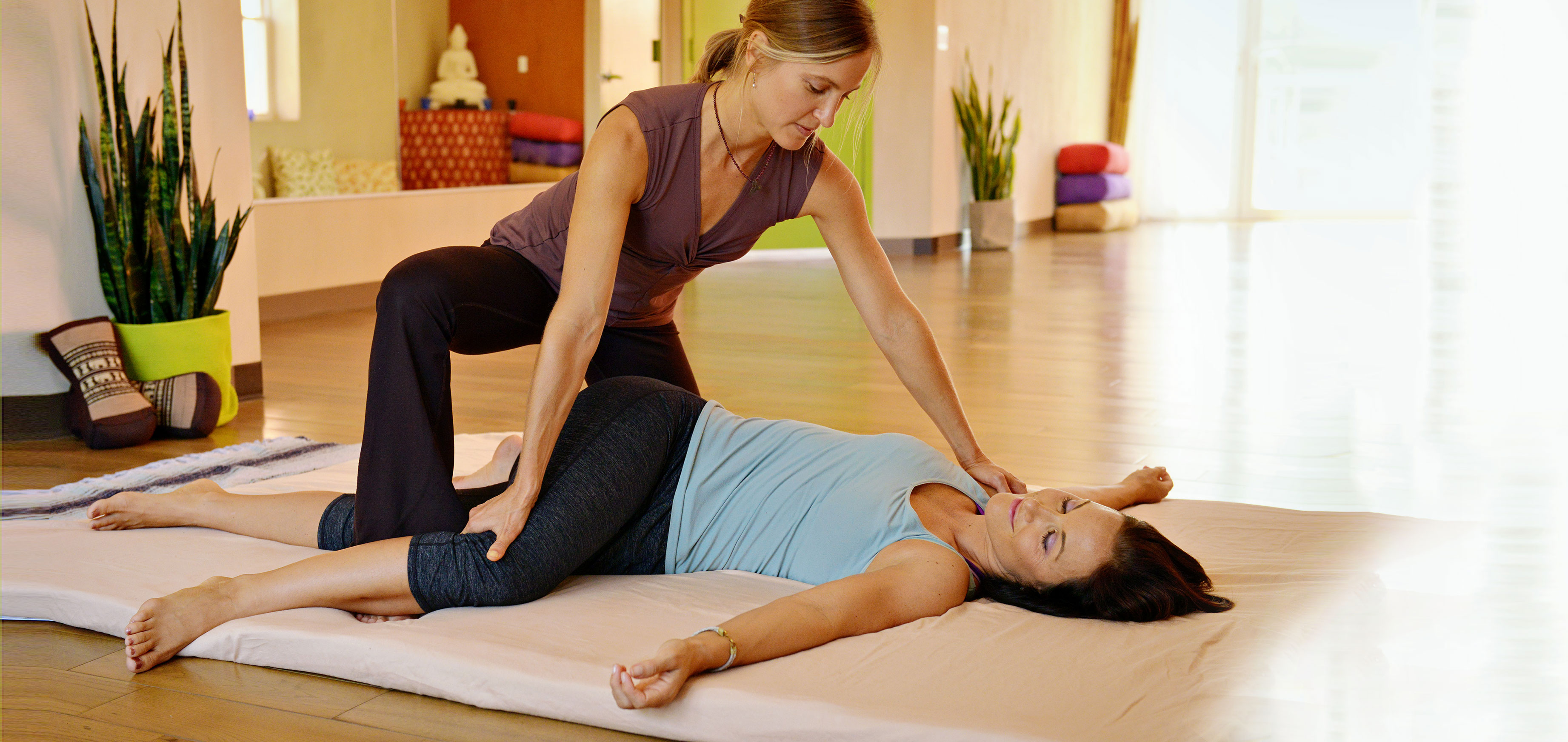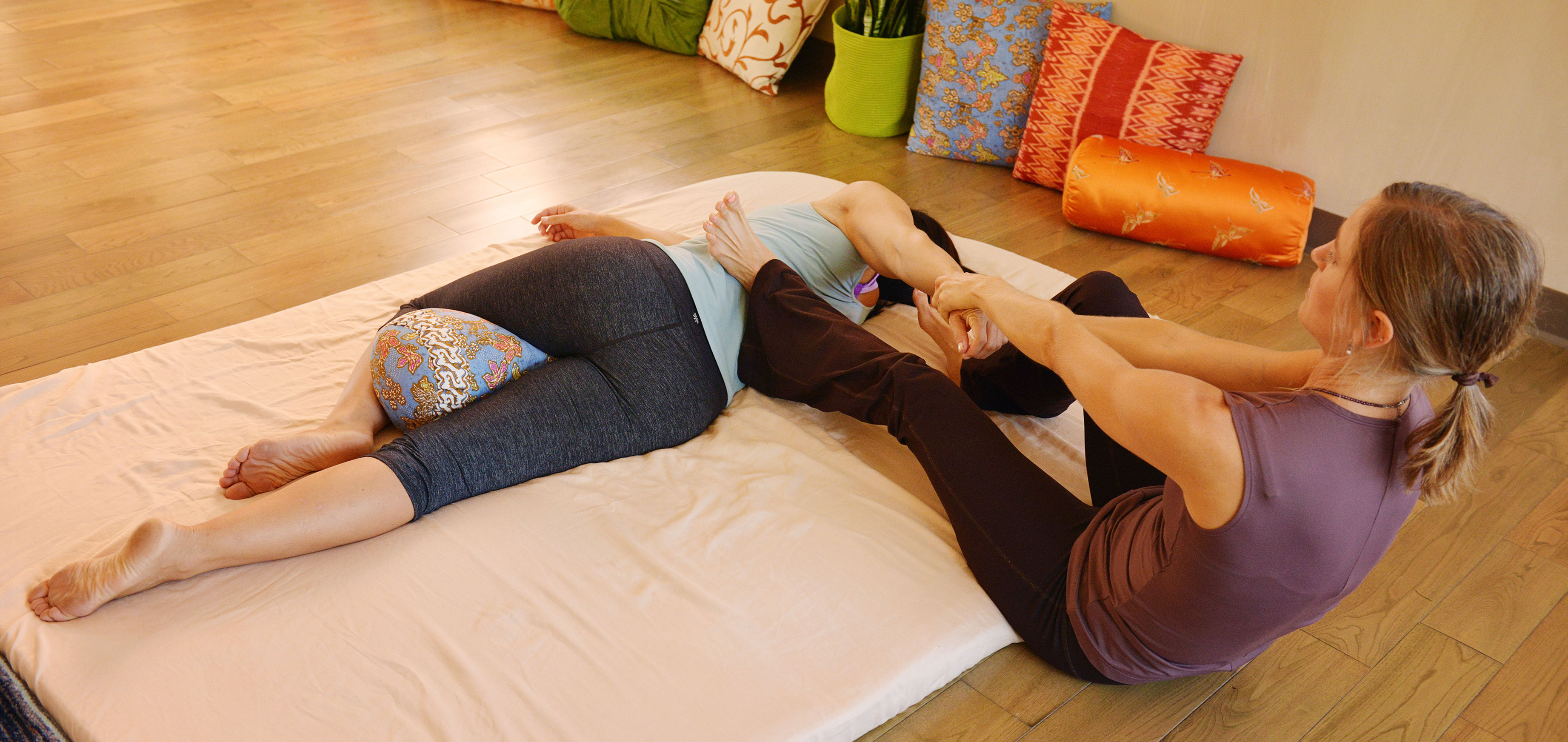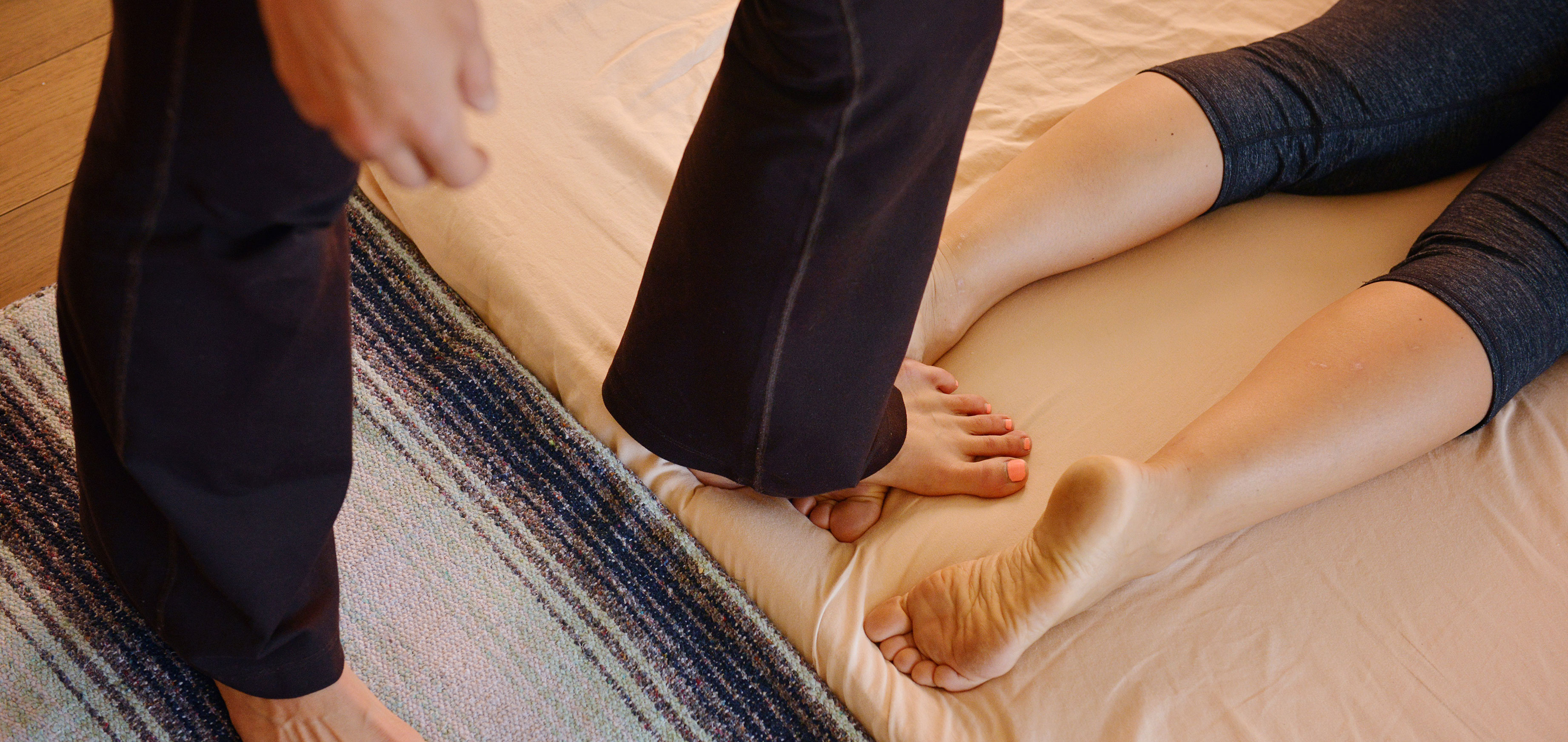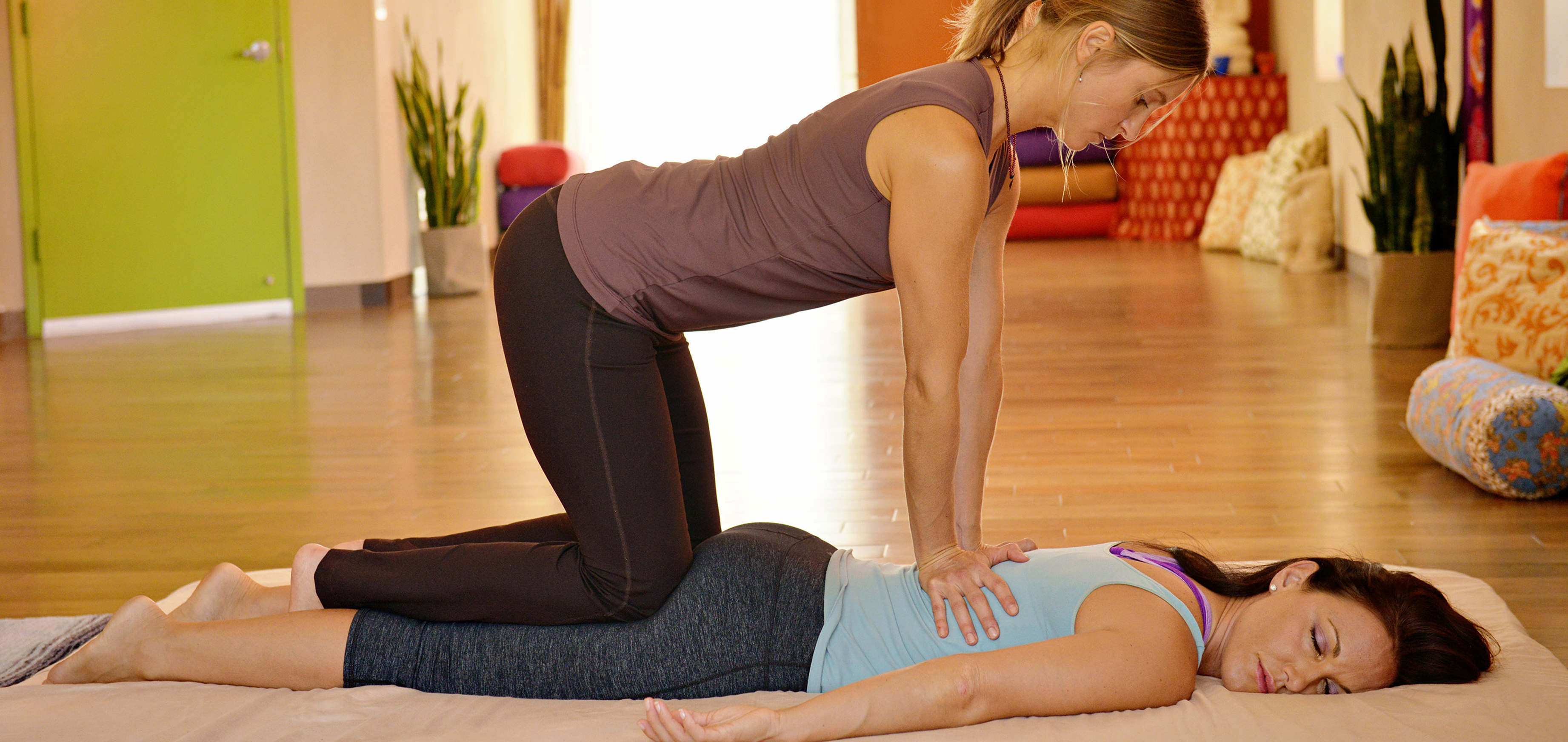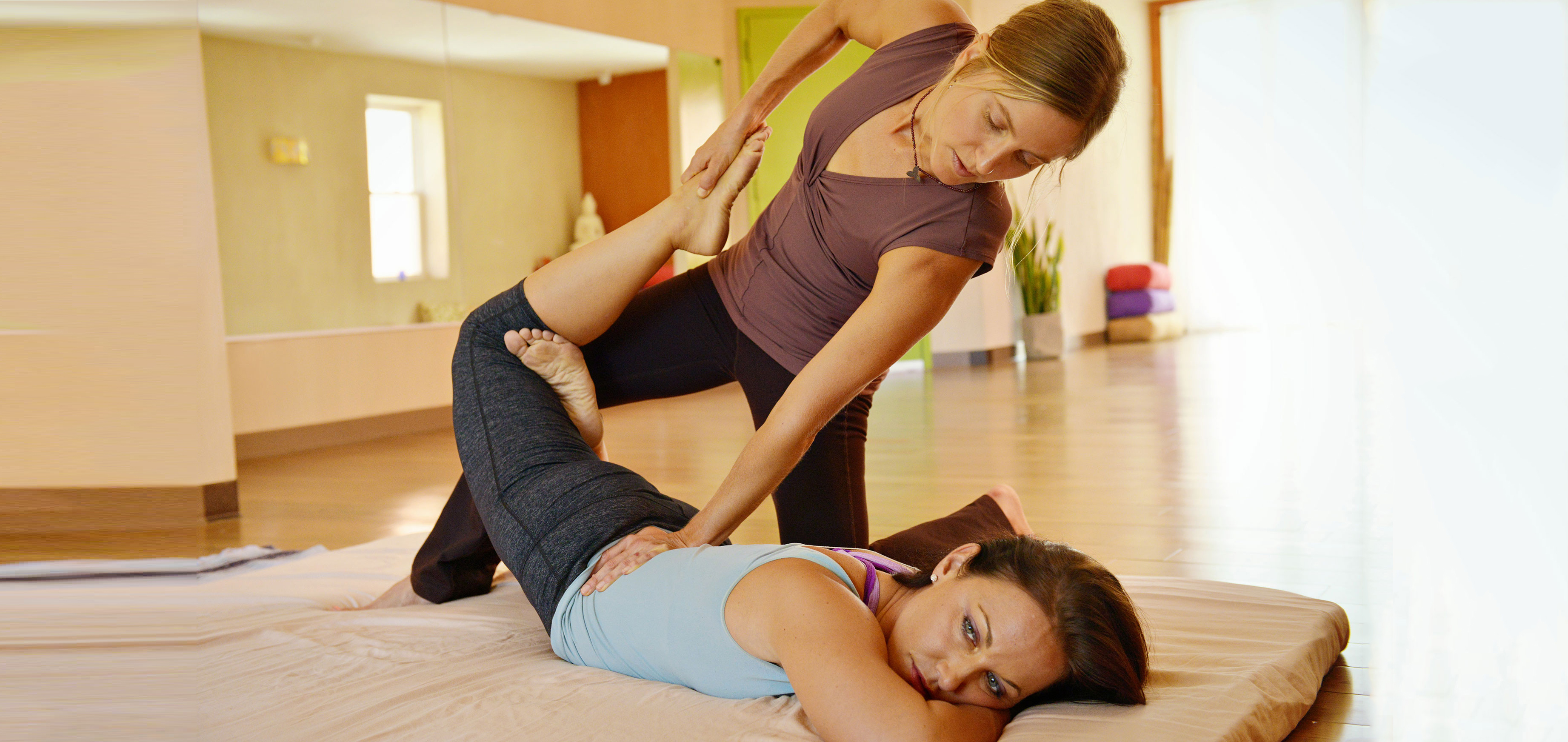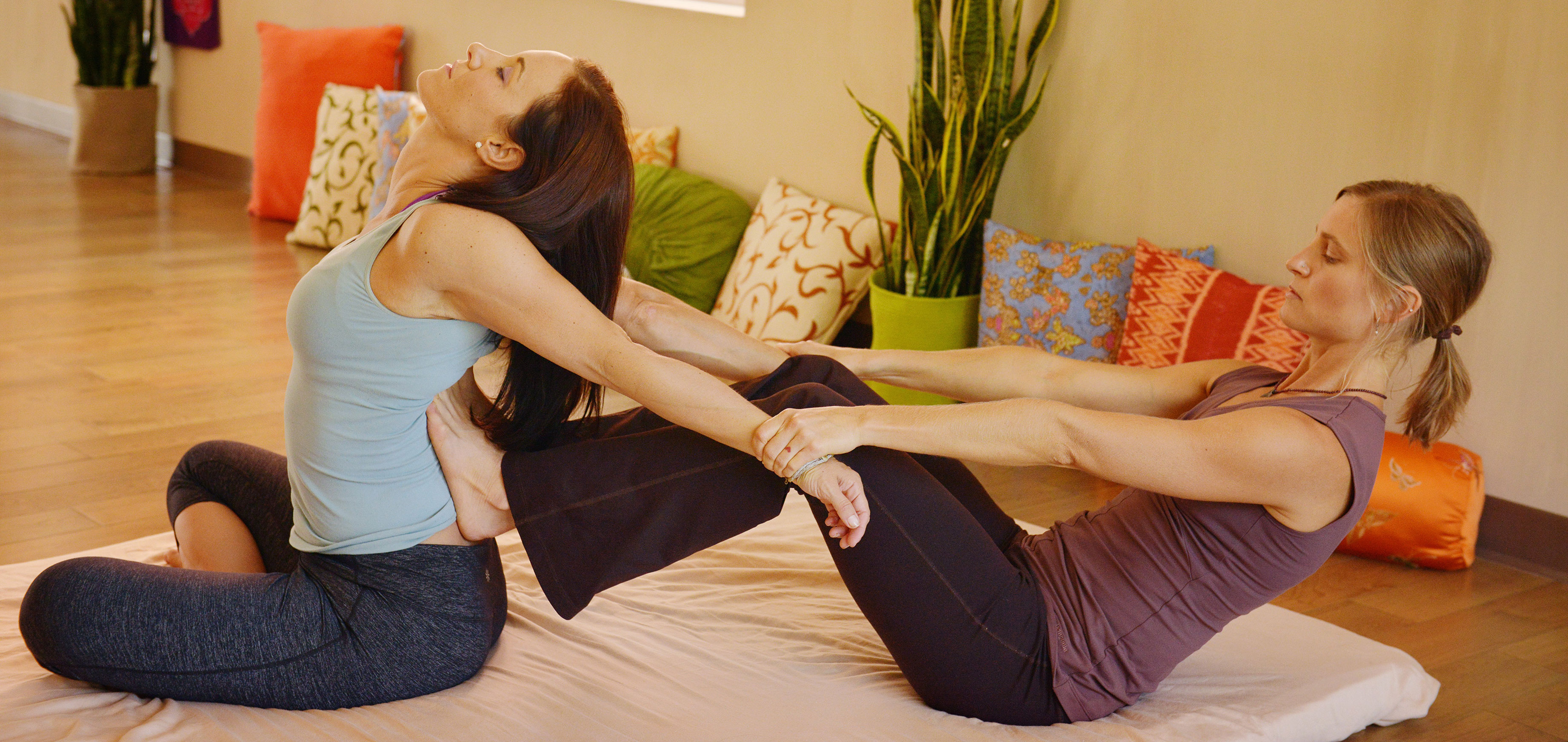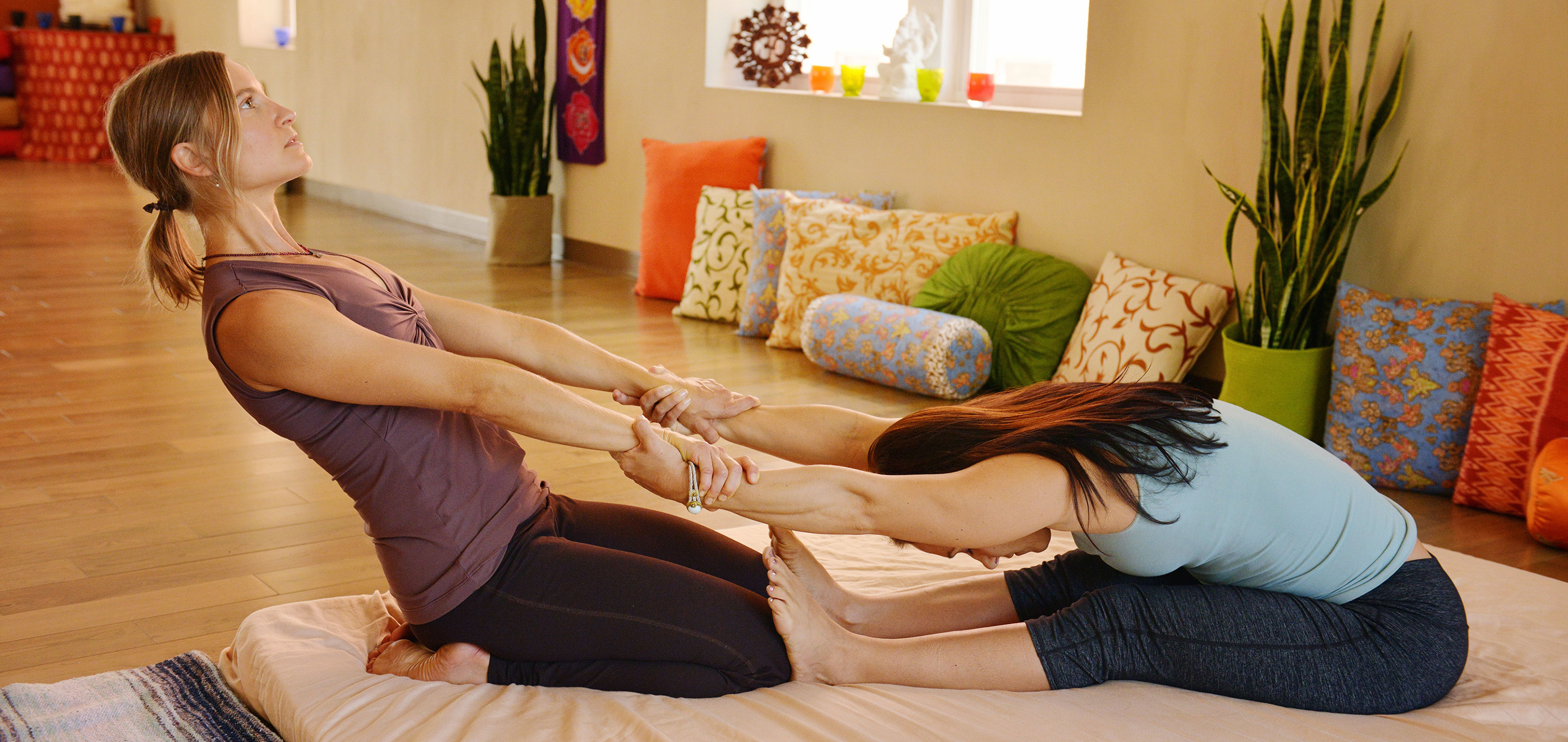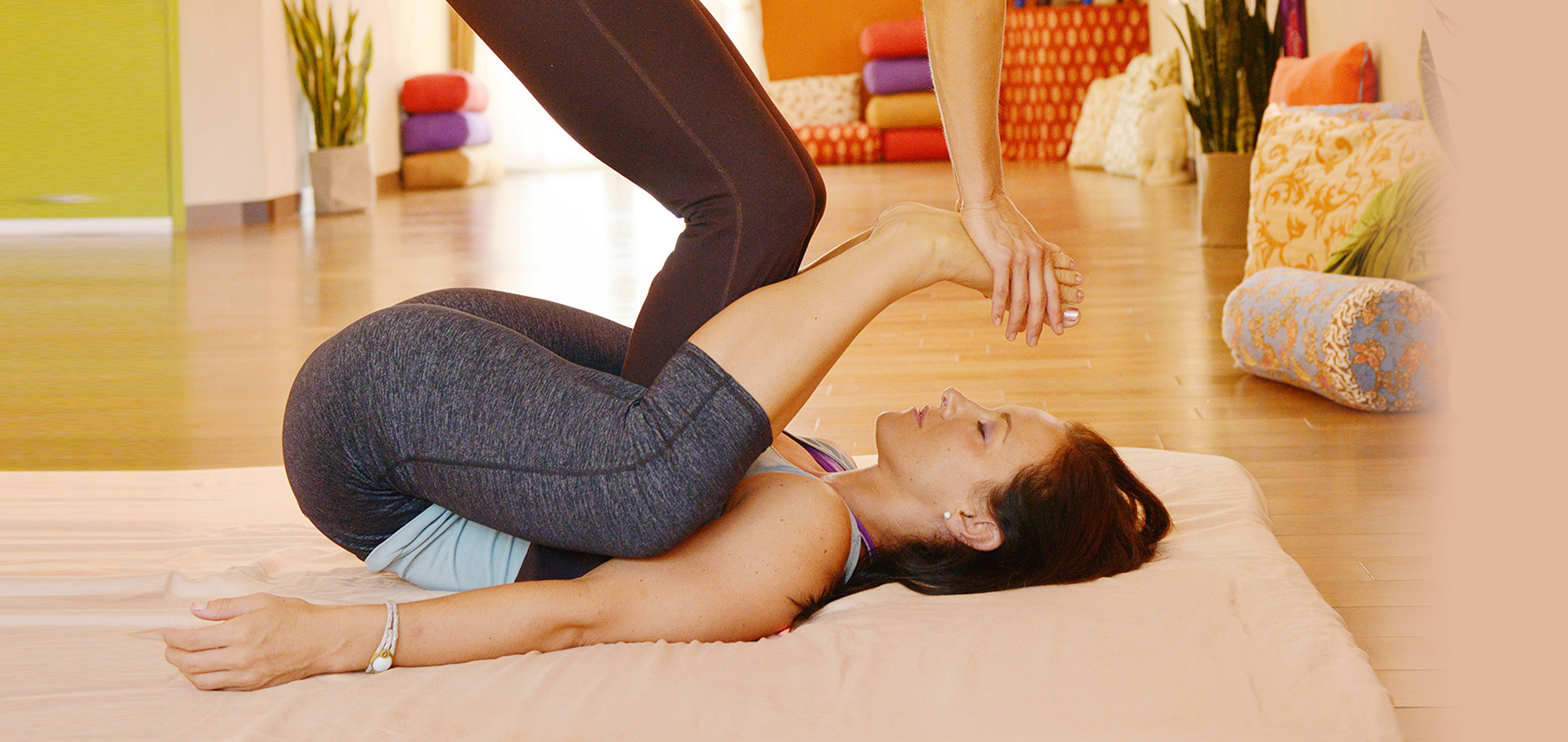Thai Massage
Traditional Thai Massage is a sacred, ancient form of eastern bodywork. It allows me to be a “conduit” of healing energy for others on physical, emotional and spiritual levels. This holistic, therapeutic practice restores balance to all systems in the body resulting in overall health and well being. Thai massage sessions feel like a fluid, creative dance for both client (receiver) and myself (giver). While fully clothed, the client lays cradled on a comfortable, cushioned mat on the floor. Each session is truly an art form – a blend of intuitive techniques that work for the individual’s unique body and energy. Imagine being deeply relaxed and stress free while totally invigorated and energized at the same time! It’s BLISS! I’ve always said once you go Thai, you never go back (to table massage)!
Clinical Thai Bodywork (CTB)
I specialize in Clinical Thai Bodywork (CTB) – an approach to therapeutic bodywork that utilizes techniques from traditional Thai massage and more sophisticated Hands Free techniques as a means of efficiently treating myofascial trigger points in muscles and restoring normal motion across joins while treating pain patterns, specific conditions and physical dysfunction. I am forever grateful for Chuck Duff at Thai Bodywork in Evanston, IL, for his dedication to designing this program to restore pain-free movement in the body. Read more about the full program and history here.
Studies have shown that over 85% of pain complaints presented at clinics are likely to be caused by myofascial trigger points in muscle fibers rather than actual tissue damage. Unfortunately, most medical practitioners and therapists tend to interpret pain as a symptom of an injury, leading to ineffective, side-effect-laden treatment approaches like drugs, steroid injections and surgery. Clinical Thai Bodywork (CTB) has a high rate of success with even very serious pain across a wide variety of diagnoses. There are very few people that this workcannot help. For information about trigger points and their pain referral patterns in the body and how I am extensively trained to relieve people of pain, please read this information. IT IS TRULY CHANGING PEOPLE’S LIVES AND I CAN HELP YOU!
Pain and “Diagnoses” Can Be Overcome! People are often given misleading, misguided medical diagnoses for their pain which imply that effective treatment is either impossible or requires invasive procedures. Here is an incomplete list of “conditions” for which I have had excellent results via my bodywork:
- Shoulder Pain
- Frozen Shoulder
- Thoracic Outlet Syndrome
- Torn Rotator Cuff
- Hand & Finger Pain/numbness
- Wrist Pain
- Headaches/migraines
- Knee Pain
- Hip Pain
- Groin Pain
- Growing Pains
- Hamstring Pain
- Sciatica
- Tendonitis
- Carpal Tunnel
- Disc-related Issues
- Arthritis
- Plantar Fascitis
- Stress Fracture
- Lower Back Pain
- Multiple Sclerosis
- Torn Labrum
- Heel Pain
- Tennis Elbow
◦ Thai massage is passive on the part of the receiver — known as “lazy man’s yoga”, the work of Thai massage is done with little or no conscious engagement on the part of the client, who may even be in a sleep or deep state of relaxation. While this is fine for general relaxation sessions, we have found that true resolution of serious pain cannot occur without involving the receiver at a conscious level. Some of the ways we engage the client are with breath, muscle activity via contract/relax, reporting of tenderness and other sensation, and most importantly, an experience of conscious, pain-free movement during the session. This is compatible with modern ideas of neuroplasticity and the neuroscience of chronic pain.
◦ CTB practitioners are fully trained to address specific pain issues and are highly competent trigger point therapists. Traditional Thai massage trains practitioners to use their intuition along with standard techniques and sequences, and does not deal with muscles or treatment design for specific issues. Traditional therapists tend to follow standard routines which may be adjusted for specific client complaints, but are not generally competent to reliably and completely address specific clinical issues, nor do they have the clinical language to communicate with other medically oriented practitioners.
◦ We design treatment protocols based on the needs of the client, and avoid putting joints through extreme range until the relevant muscles on both sides of the joint have been treated. Traditional sequences, and in fact predetermined sequences of any kind ignore the specific realities of a given client’s body issues, and often stretch and shorten muscles that have not been touched in the session. Clients with relatively few serious issues can tolerate this approach, but for those with significant dysfunction, it is likely to make things worse. Unfortunately, cyberspace is replete with stories of people whose pain was aggravated by overly aggressive traditional Thai massage practitioners going through their “standard routine”.
◦ Our treatment protocols are designed to visit all the muscles that are relevant to a particular regional pain complaint, based upon years of research into direct and satellite referral patterns, functional relationships, perpetuating factors, nervous and vascular impingement and processing of the kinetic chain.
◦ We pay particular attention to shortening muscles, which often block movement through painful dysfunction during shortening. This causes the body to engage the antagonist muscle group to protect the body from pain.
◦ We employ other modalities in conjunction with our work, which may include various forms of heat, electronic point stimulation, PIR and muscle energy techniques.
◦ We view the CTB session as a refined form of trigger point therapy with a strong movement component. We are highly educated trigger point therapists who use Thai techniques. We use compression to treat trigger points and taut fibers, and employ various means of providing feedback to muscles as they change length. This allows us to teach muscles how to lengthen and shorten without the disabling pain response caused by trigger points and dysfunctional muscle spindles.
◦ Traditional Thai training involves little or no anatomy, because this was not the basis of the traditional medicine. Some schools today provide rudimentary anatomy exposure that is poorly integrated into the rest of the training, if at all. We are successful only because we fully understand muscular anatomy and function. Our practitioners have a deep understanding of functional anatomy, and all of our classes build and employ this knowledge. We don’t abandon the energetic viewpoint of traditional bodywork, but add a great deal of clinical knowledge to it.
◦ The focus of CTB is the restoration of normal, pain-free movement. The techniques combine compression of tender points, traversal of key lines and joint movement to find and eliminate taut fibers and tenderness and to unlock the compensatory splinting patterns that are the body’s attempt to stabilize painful and unstable areas.



